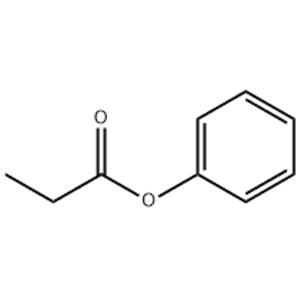
phenyl propionate NEW
| Price | $5 | $0.2 |
| Package | 1KG | 1000KG |
| Min. Order: | 1KG |
| Supply Ability: | g-kg-tons, free sample is available |
| Update Time: | 2024-04-02 |
Product Details
| Product Name: phenyl propionate | CAS No.: 637-27-4 |
| Min. Order: 1KG | Purity: 98% |
| Supply Ability: g-kg-tons, free sample is available | Release date: 2024/04/02 |
| Lead time: In stock, ready for shipment | Packaging: bag/bottle/drum/IBC |
| Delivery: By express, by air, by sea | Origin: Manufacturer, advantage product |
| COA, MSDS: Available, contact us for details | Name: Tina |
1. Materials information
| Name | phenyl propanoate |
|---|---|
| Synonym | More Synonyms |
| Density | 1.05 g/cm3 |
|---|---|
| Boiling Point | 211ºC |
| Molecular Formula | C9H10O2 |
| Molecular Weight | 150.17400 |
| Flash Point | 85.2ºC |
| Exact Mass | 150.06800 |
| PSA | 26.30000 |
| LogP | 2.00200 |
| Index of Refraction | 1.5 |
Section I.Chemical Product and Company Identification Chemical Name Propionic Acid Phenyl Ester Portland OR SynonymPhenyl Propionate Chemical FormulaCH3CH2COOC6H5 CAS Number637-27-4 Section II.Composition and Information on Ingredients Chemical NameCAS Number Percent (%)TLV/PELToxicology Data Propionic Acid Phenyl Ester637-27-4Min. 95.0 Not available.Not available. (GC) Section III. Hazards Identification Acute Health EffectsNo specific information is available in our data base regarding the toxic effects of this material for humans. However, exposure to any chemical should be kept to a minimum. Skin and eye contact may result in irritation. May be harmful if inhaled or ingested. Always follow safe industrial hygiene practices and wear proper protective equipment when handling this compound. CARCINOGENIC EFFECTS : Not available. Chronic Health Effects MUTAGENIC EFFECTS : Not available. TERATOGENIC EFFECTS : Not available. DEVELOPMENTAL TOXICITY: Not available. There is no known effect from chronic exposure to this product. Repeated or prolonged exposure to this compound is not known to aggravate existing medical conditions. Section IV.First Aid Measures Eye ContactCheck for and remove any contact lenses. IMMEDIATELY flush eyes with runing water for at least 15 minutes. keeping eyelids open. COLD water may be used. DO NOT use an eye oitment. Flush eyes with running water for a minimum of 15 minutes, occasionally lifting the upper eyelids. Seek medical attention. Treat symptomatically and supportively. Skin ContactAfter contact with skin, wash immediately with plenty of water. Gently and thorough wash the contaminated skin with running water and non-abrasive soap. Be particularly careful to clean folds, crevices, creases and groin. COLD water may be used. Cover the irritated skin with an emollient. Seek medical attention. Treat symptomatically and supportively. Wash any contaminated clothing before reusing. InhalationIf the victim is not breathing, perform mouth-to-mouth resuscitation. Loosen tight clothing such as a collar, tie, belt or waistband. If breathing is difficult, oxygen can be administered. Seek medical attention if respiration problems do not improve. IngestionINDUCE VOMITING by sticking finger in throat. Lower the head so that the vomit will not reenter the mouth and throat. Loosen tight clothing such as a collar, tie, belt or waistband. If the victim is not breathing, perform mouth-to-mouth resuscitation. Examine the lips and mouth to ascertain whether the tissues are damaged, a possible indication that the toxic material was ingested; the absence of such signs, however, is not conclusive. SEEK IMMEDIATE MEDICAL ATTENTION in case of ingestion of a radioactive material. Section V.Fire and Explosion Data Not available. FlammabilityMay be combustible at high temperature.Auto-Ignition Flash PointsFlammable LimitsNot available. Not available. Combustion ProductsThese products are toxic carbon oxides (CO, CO 2). Fire Hazards No specific information is available regarding the flammability of this compound in the presence of various materials. Explosion HazardsRisks of explosion of the product in presence of mechanical impact: Not available. Risks of explosion of the product in presence of static discharge: Not available. No additional information is available regarding the risks of explosion. Fire Fighting Media SMALL FIRE: Use DRY chemicals, CO2, water spray or foam. LARGE FIRE: Use water spray, fog or foam. DO NOT use water jet. and Instructions Consult with local fire authorities before attempting large scale fire-fighting operations. Continued on Next Page Propionic Acid Phenyl Ester Section VI.Accidental Release Measures Spill CleanupIn case of a spill and/or a leak, always shut off any sources of ignition, ventilate the area, and exercise caution. Use a Instructionsshovel to put the material into a convenient waste disposal container. Finish cleaning the spill by rinsing any contaminated surfaces with copious amounts of water. Consult federal, state, and/or local authorities for assistance on disposal. Section VII. Handling and Storage Handling and StorageKeep away from heat and sources of ignition. Mechanical exhaust required. When not in use, tightly seal the container and store in a dry, cool place. Avoid excessive heat and light. DO NOT breathe dust. Information Always store away from incompatible compounds such as oxidizing agents. Section VIII. Exposure Controls/Personal Protection Engineering ControlsUse process enclosures, local exhaust ventilation, or other engineering controls to keep airborne levels below recommended exposure limits. If user operations generate dust, fume or mist, use ventilation to keep exposure to airborne contaminants below the exposure limit. Personal ProtectionSplash goggles. Lab coat. Dust respirator. Boots. Gloves. Suggested protective clothing might not be sufficient; consult a specialist BEFORE handling this product. Exposure LimitsNot available. Section IX. Physical and Chemical Properties Solubility Physical state @ 20°CCrystalline solid.Not available. 1.05 Specific Gravity Molecular Weight150.17Partition CoefficientNot available. Boiling Point211°C (411.8°F)Vapor PressureNot available. Melting PointNot available.Vapor DensityNot available. Not available.VolatilityNot available. Refractive Index Critical TemperatureOdorNot available. Not available. Not available.Not available. ViscosityTaste Section X.Stability and Reactivity Data This material is stable if stored under proper conditions. (See Section VII for instructions) Stability Conditions of Instability Avoid excessive heat and light. Incompatibilities Reactive with oxidizing agents. Section XI. Toxicological Information RTECS NumberNot available. Routes of ExposureEye contact. Ingestion. Inhalation. Not available. Toxicity Data Chronic Toxic EffectsCARCINOGENIC EFFECTS : Not available. MUTAGENIC EFFECTS : Not available. TERATOGENIC EFFECTS : Not available. DEVELOPMENTAL TOXICITY: Not available. There is no known effect from chronic exposure to this product. Repeated or prolonged exposure to this compound is not known to aggravate existing medical conditions. Acute Toxic EffectsNo specific information is available in our data base regarding the toxic effects of this material for humans. However, exposure to any chemical should be kept to a minimum. Skin and eye contact may result in irritation. May be harmful if inhaled or ingested. Always follow safe industrial hygiene practices and wear proper protective equipment when handling this compound. Continued on Next Page Propionic Acid Phenyl Ester Section XII.Ecological Information EcotoxicityNot available. Environmental FateNot available. Section XIII. Disposal Considerations Recycle to process, if possible. Consult your local or regional authorities. You may be able to dissolve or mix material with Waste Disposal a combustible solvent and burn in a chemical incinerator equipped with an afterburner and scrubber system. Observe all federal, state, and local regulations when disposing of the substance. Section XIV. Transport Information DOT ClassificationNot a DOT controlled material (United States). PIN NumberNot applicable. Proper Shipping Name Not applicable. Packing Group (PG)Not applicable. DOT Pictograms Section XV. Other Regulatory Information and Pictograms TSCA Chemical InventoryThis compound is ON the EPA Toxic Substances Control Act (TSCA) inventory list. (EPA) WHMIS Classification On NDSL. (Canada) EINECS Number (EEC) 211-282-1 EEC Risk StatementsNot available. SECTION 16 - ADDITIONAL INFORMATION N/A |
| Safety Phrases | S23-S24/25 |
|---|---|
| HS Code | 2915509000 |
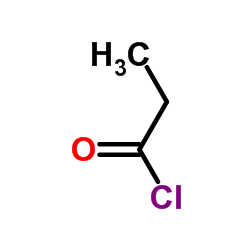 Propanoyl chlor... 79-03-8 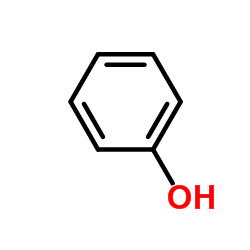 Phenol 108-95-2 ~96%  Propanoic acid,... 637-27-4 |
| Literature: Murashige, Ryo; Hayashi, Yuka; Ohmori, Syo; Torii, Ayuko; Aizu, Yoko; Muto, Yasuyuki; Murai, Yuta; Oda, Yuji; Hashimoto, Makoto Tetrahedron, 2011 , vol. 67, # 3 p. 641 - 649 |
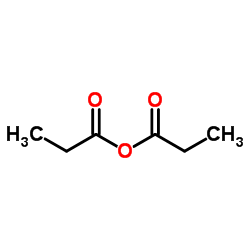 Propionic anhyd... 123-62-6  Phenol 108-95-2 ~97%  Propanoic acid,... 637-27-4 |
| Literature: Dalpozzo, Renato; De Nino, Antonio; Maiuolo, Loredana; Oliverio, Manuela; Procopio, Antonio; Russo, Beatrice; Tocci, Amedeo Australian Journal of Chemistry, 2007 , vol. 60, # 1 p. 75 - 79 |
 PHENYL ACRYLATE 937-41-7 ~25%  Propanoic acid,... 637-27-4 |
| Literature: Hirasawa, Satomi; Nagano, Hajime; Kameda, Yoko Tetrahedron Letters, 2004 , vol. 45, # 10 p. 2207 - 2209 |
| Precursor 9 | Previous 1/3 Next |
|---|---|
| |
| DownStream 9 | Previous 1/3 Next |
| |
| HS Code | 2915509000 |
|---|---|
| Summary | 2915509000 propionic acid, its salts and esters。supervision conditions:AB(certificate of inspection for goods inward,certificate of inspection for goods outward)。VAT:17.0%。tax rebate rate:9.0%。MFN tariff:5.5%。general tariff:30.0% |
2. Packaging of materials
For powders: normal is 25kgs/Drum or bag, or larger/smaller package as request.
For liquids: normal 25kgs/drum, 180-300kgs/bucket, or IBC, determined by the nature of the product.
Or smaller package 1kg/bottle, 10kgs/bottle as request.
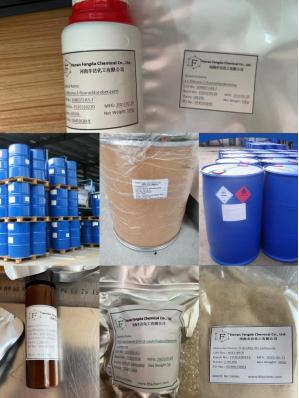
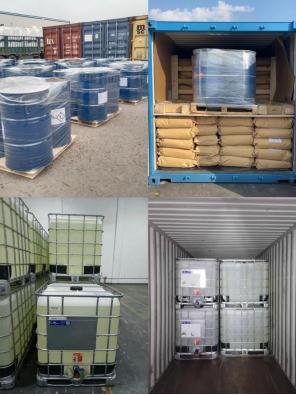
3. Shipping & Delivery
By Express
Provide door to door service
Suitable for goods under 50kg
Delivery: 3-7 days
Cost: low cost

By Air
Provide airport to airport service
Suitable for goods over 50kg
Delivery: 3-14 days
Cost: high cost

By Sea
Provide seaport to seaport service
Suitable for goods over 100kg
Delivery: 2-45 days
Cost: low cost

4. Contact information
For more details, pls contact us freely.
Email address: Tina@fdachem.com
Mob: 86 15225627621
WhatsApp/Skype/Wechat/LINE: 86 15225627621
Company Profile Introduction
You may like
Recommended supplier
| Product name | Price | Suppliers | Update time | |
|---|---|---|---|---|
| $9.80/1.8KG |
VIP5Y
|
Career Henan Chemical Co
|
2020-01-09 |
- Since: 2023-02-10
- Address: Room 01, 2288 E05, Building 14, East Henan University, Science and Technology Park, 279 Xisanhuan Ro




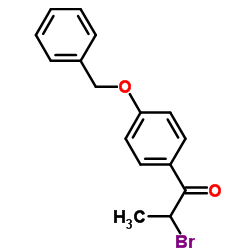 CAS#:35081-45-9
CAS#:35081-45-9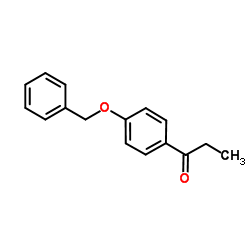 CAS#:4495-66-3
CAS#:4495-66-3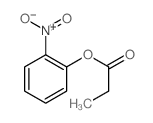 CAS#:19686-49-8
CAS#:19686-49-8 CAS#:1956-06-5
CAS#:1956-06-5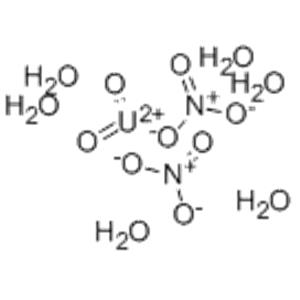



 China
China